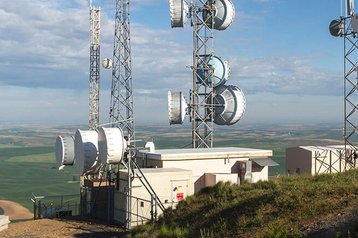Edge is a critical piece of enterprise computing, especially in the financial services and manufacturing industries, which have business models pushing them to the earliest adoption.
What do enterprise Edge facilities look like?
Whether it is a core data center or an Edge facility in a regional or remote location, enterprises need computing equipment.
For Edge deployments, many organizations don’t have available space. Or they make do with spaces adapted to act as micro data centers.
Since these areas are not designed for critical IT equipment, they are rarely adequate - lacking space, reliable power supplies, proper environmental controls, and security.
Trying to retrofit these spaces, when possible, can be expensive and time-consuming.
Adding an Edge facility is a complex calculation for an enterprise - how much money do they want to spend, and how will it help achieve business goals?
Edge Move is driven by market conditions
Gartner predicts that 75 percent of data generated by enterprises will be processed at the Edge within the next four years.
The growing desire for real-time interactions is driving businesses to bring computing power closer to end-users.
According to IDC, 30 percent of the global data sphere will be in real-time by 2025.
Deploying a modular data center is a way to quickly provide the needed IT services, ensure room for future expansion and enable enterprises to keep up with evolving technologies and demands for real-time services.
Modular and the Edge
Edge modules have a small footprint and are built offsite with all the necessary infrastructure, so they’re ready to go on day one.
Because they are self-contained, they are protected from the weather and environment. This makes them ideal to deploy in difficult locations or far from the core data center.
The systems are tested and certified for operation and can be deployed in as little as a few months - and they cost 20-30 percent less to build than a standard data center.
Ease of deployment
Modules can be delivered complete with equipment racks, UPS equipment, batteries, switchgear, cooling equipment, fire suppression systems, and monitoring systems.
The modules can be ganged together as required for larger sites.
Cooling
Modular data centers can be designed for a variety of cooling options, based on the needs for the Edge, including in-row cooling, immersion cooling, or free cooling solutions.
Power
Deploying a modular Edge facility includes utility power hookups, standby generators, uninterruptible power supply (UPS) modules, and power distribution to ensure uptime.
Security and fire protection
Modular units are delivered with fire suppression systems and security built-in. These connect with on-site or enterprise security and operations to integrate with the Data Center monitoring system and the building management system. This enables the IT team to monitor all the critical functions, cooling, power, racks, temperature, fire protection system, and security - from a remote location.
Conclusions
As organizations in all fields face more real-time challenges to meet the requirements of their customers and partners, the need for Edge facilities will continue to grow.
In many instances, building a new data center or forcing critical IT equipment into inadequate spaces are acceptable approaches for expanding an enterprise’s presence on the Edge.
Modular data centers are designed to meet current needs and should be flexible enough for future expansion.


